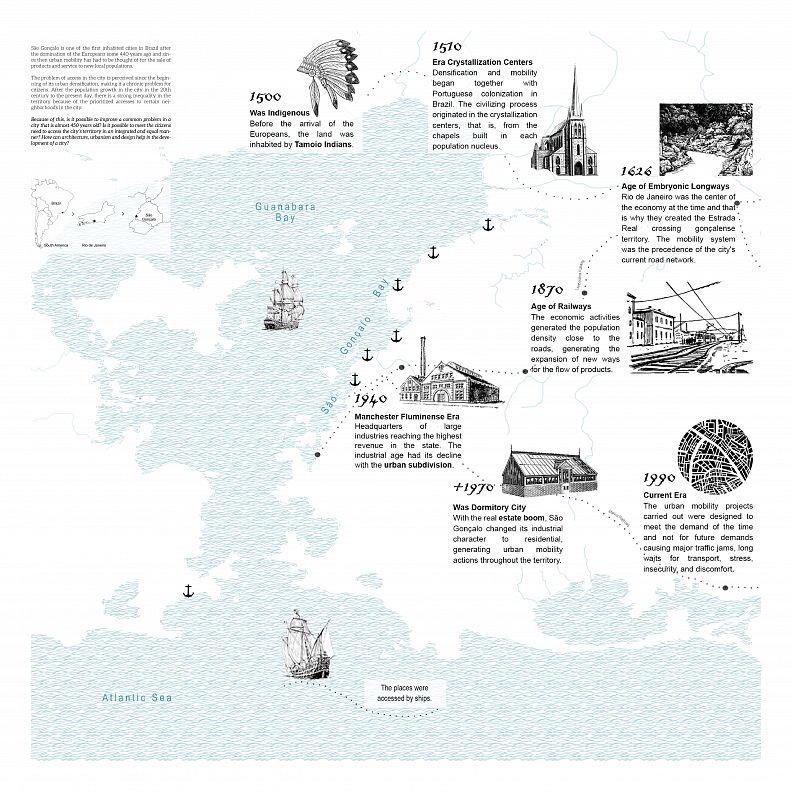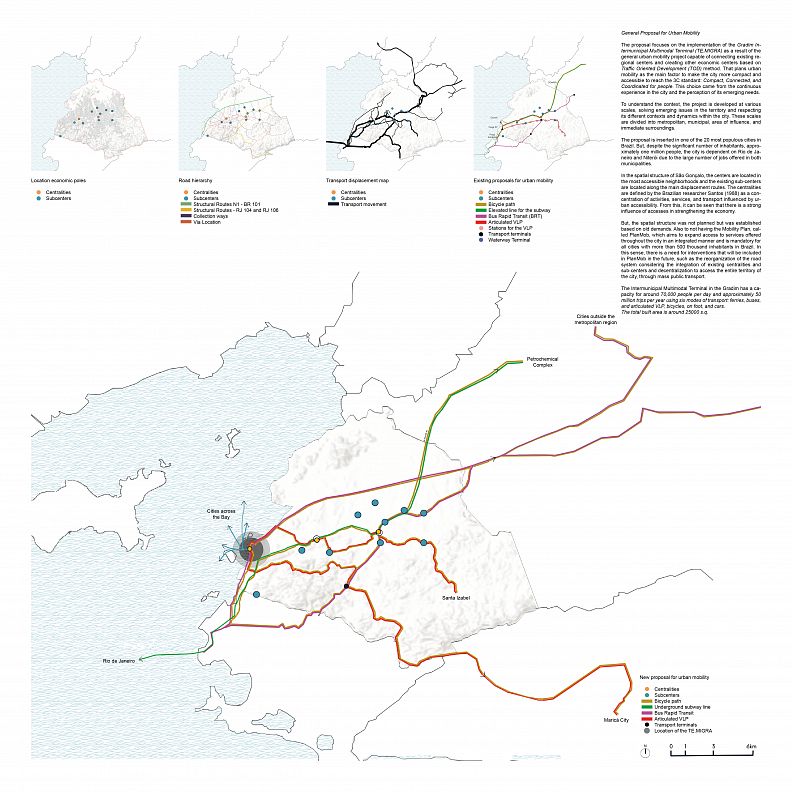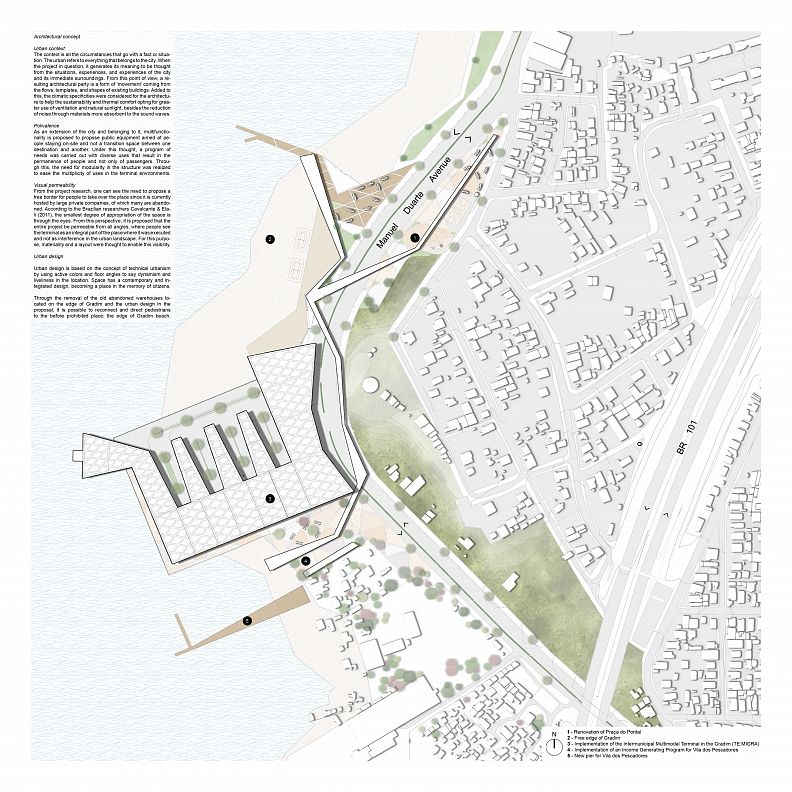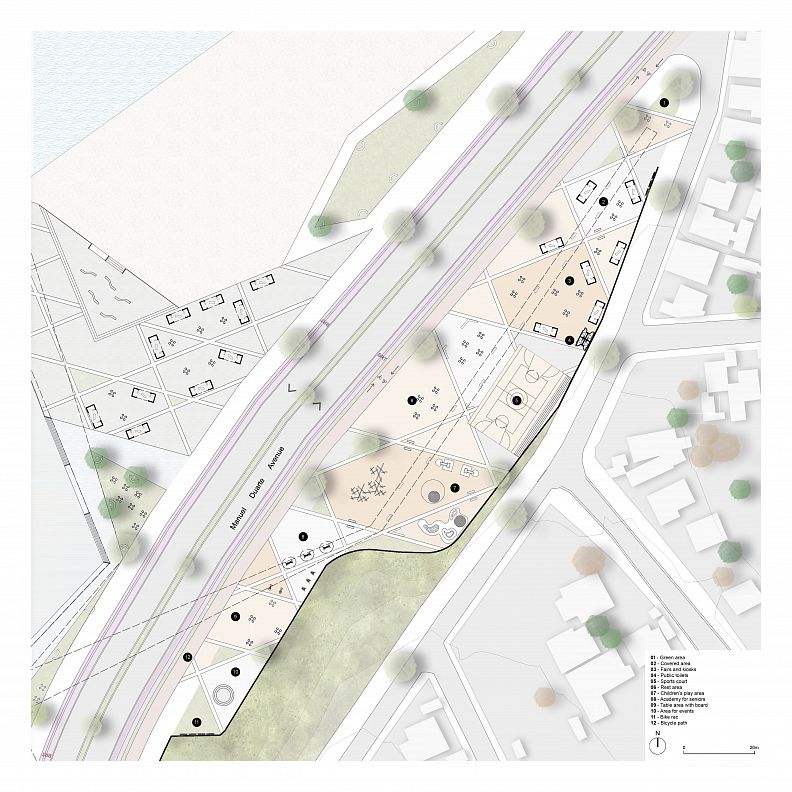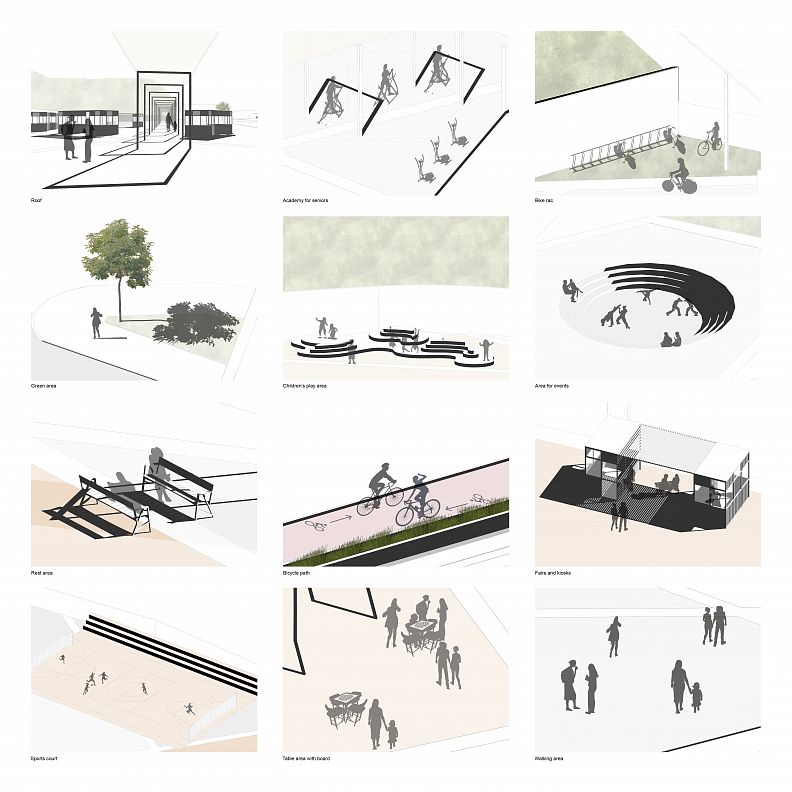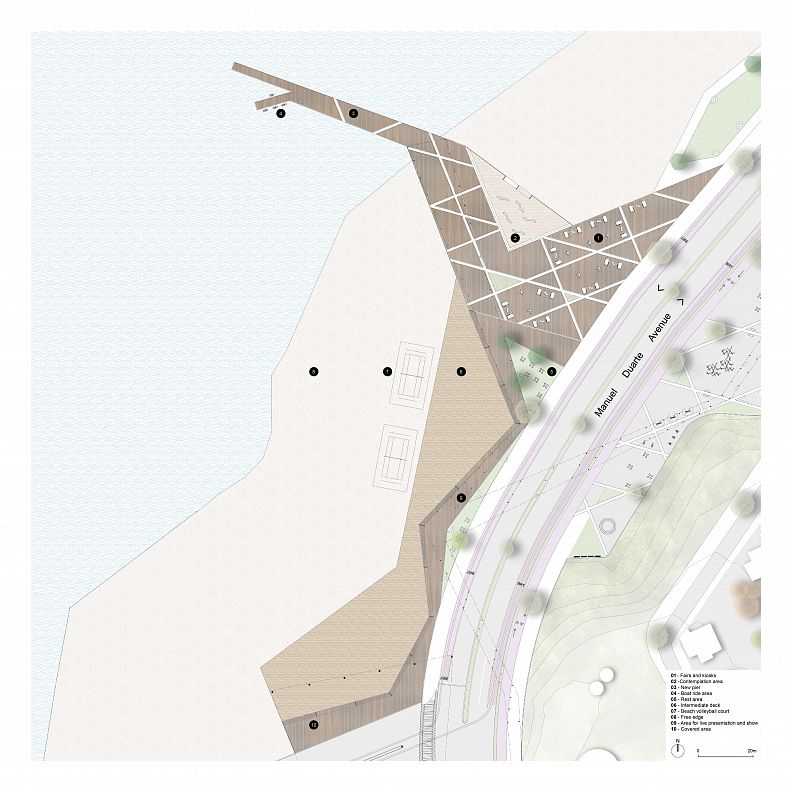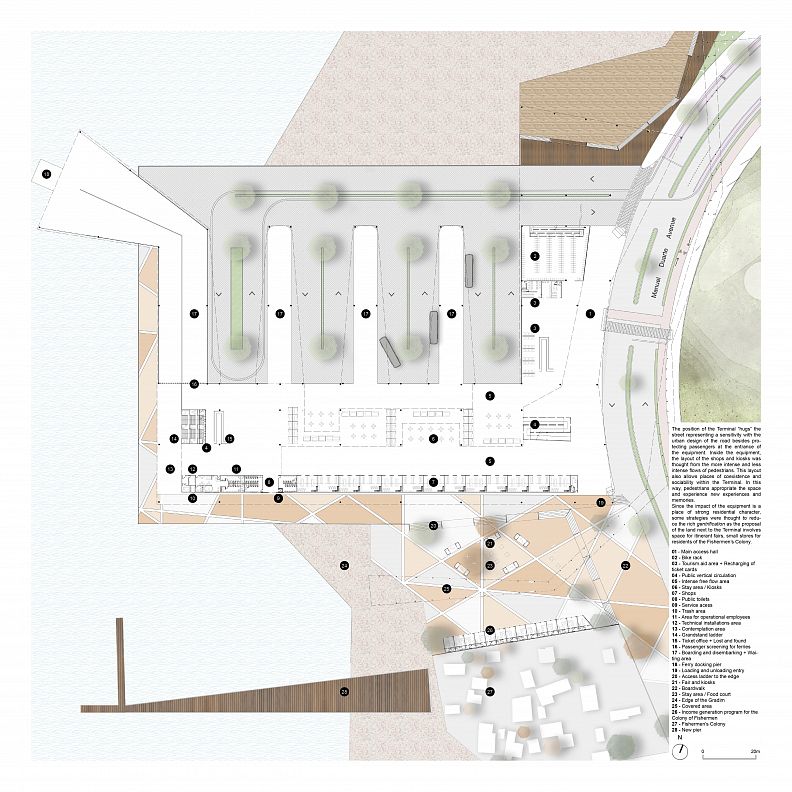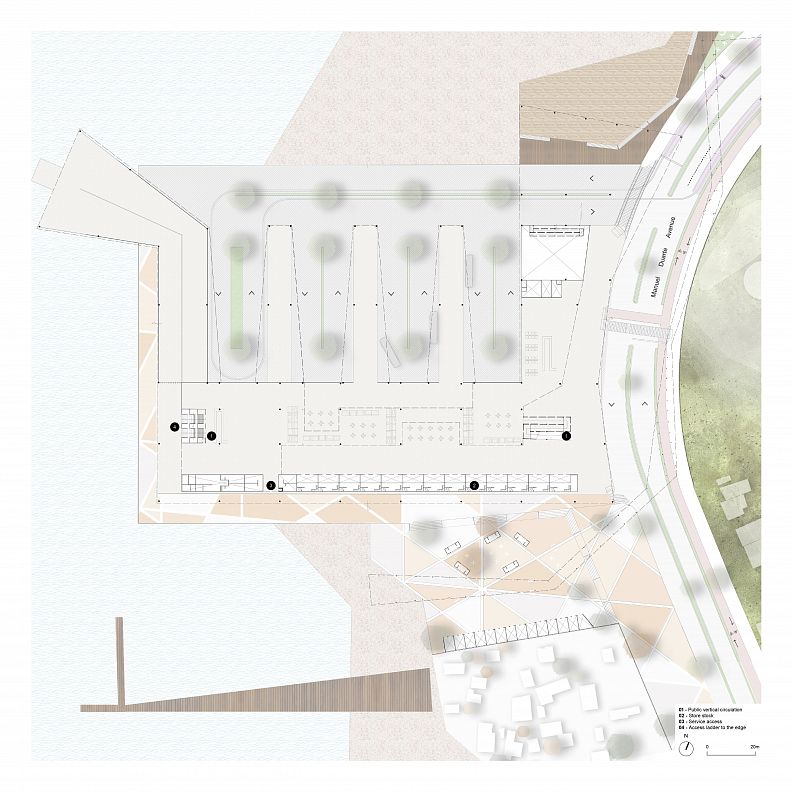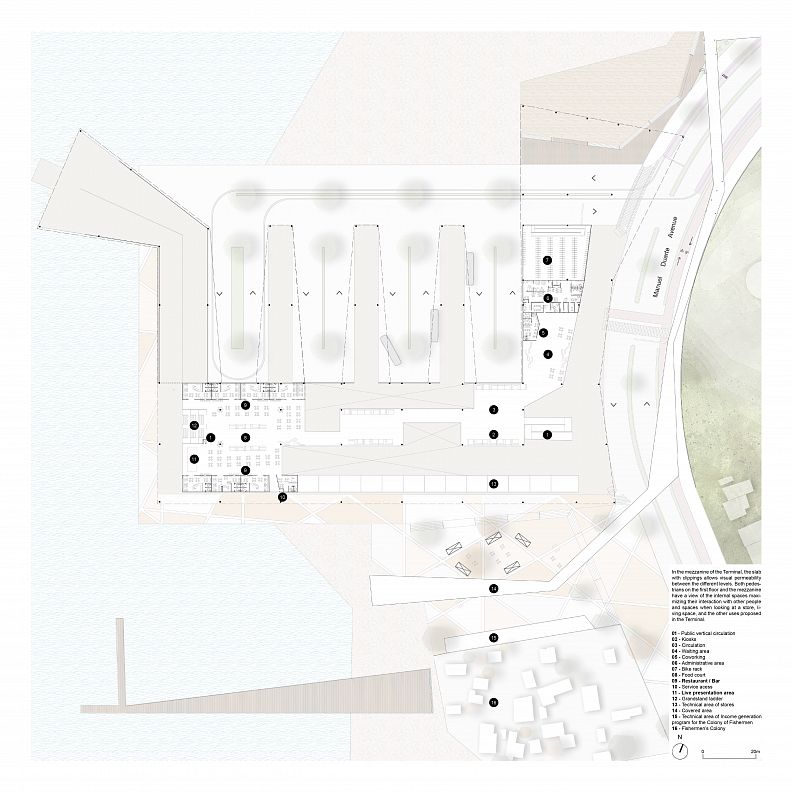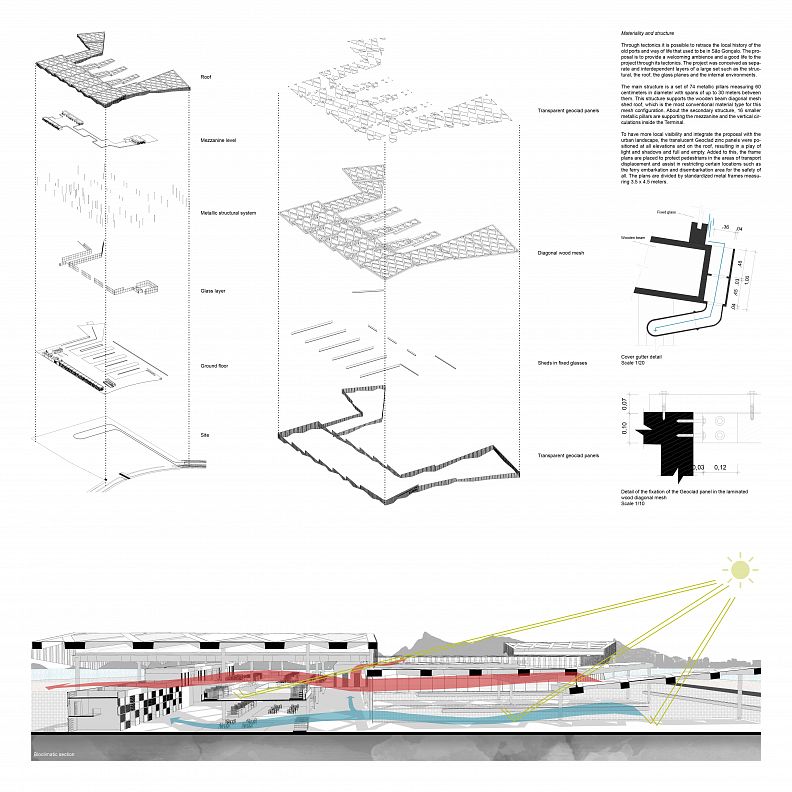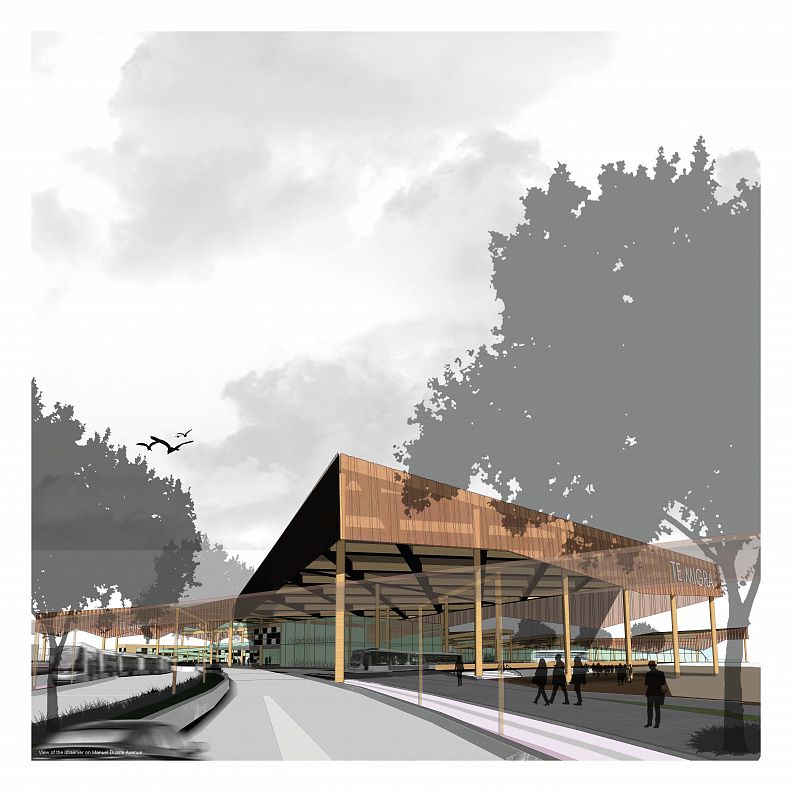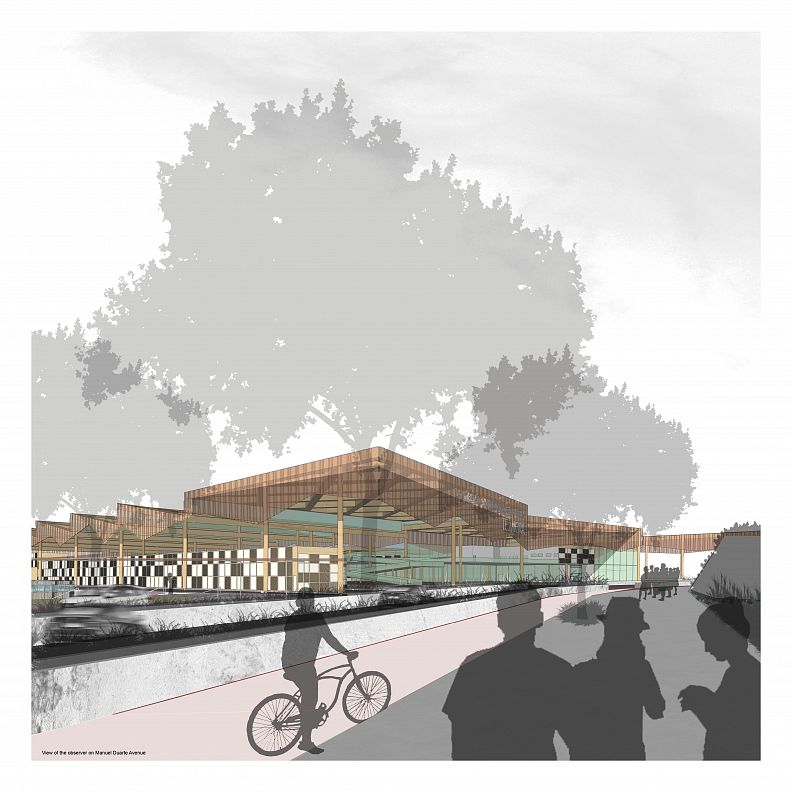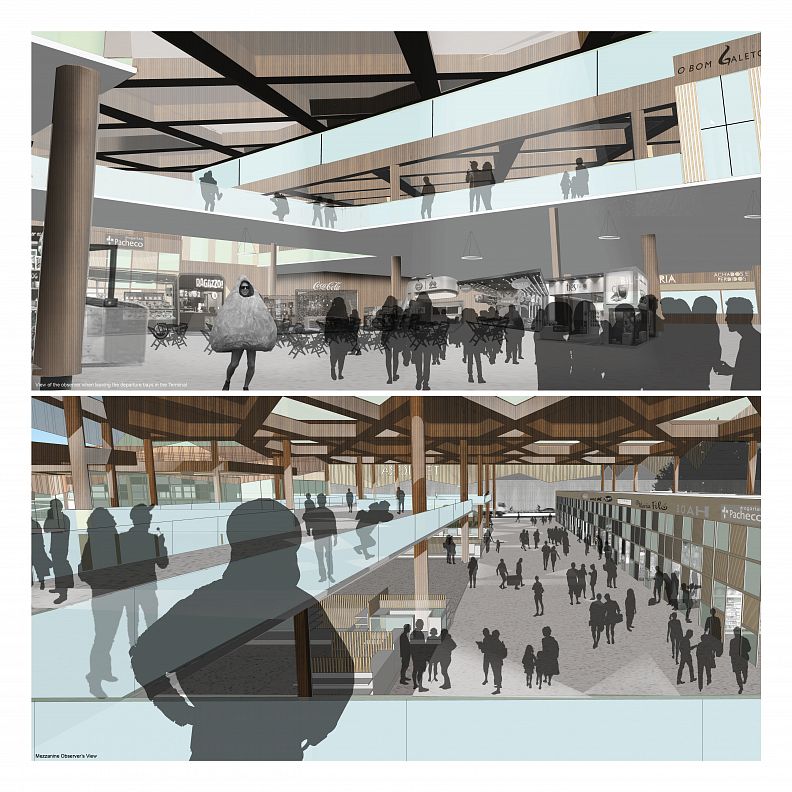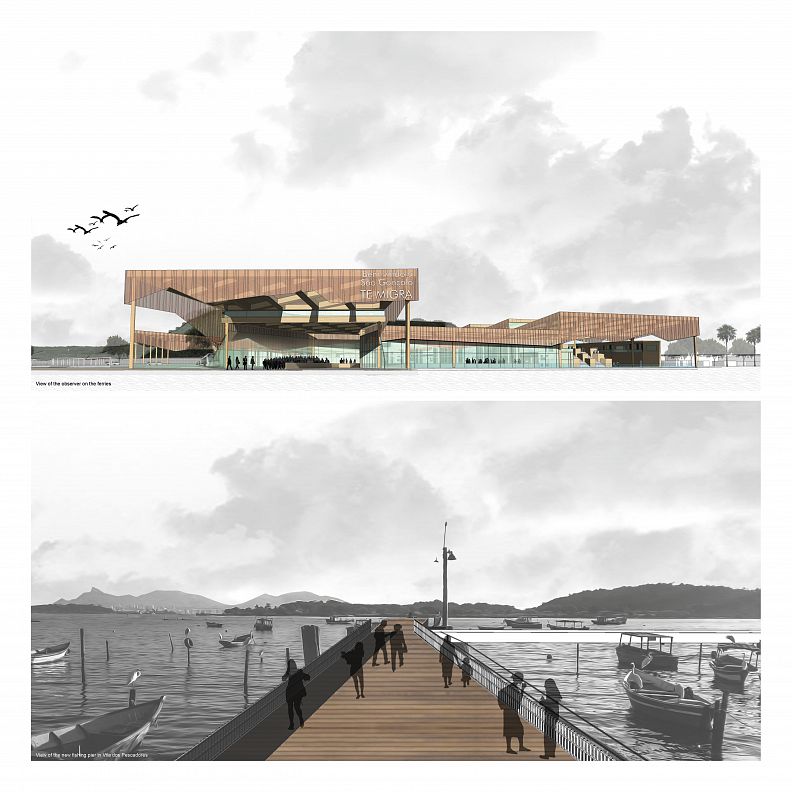Reinforcing Centralities: The Case of the Intermunicipal Multimodal Terminal in the Gradim (Te.Migra)

Project idea
São Gonçalo is one of the first inhabited cities in Brazil after the domination of the Europeans some 440 years ago and since then urban mobility has had to be thought of for the sale of products and service to new local populations.
The problem of access in the city is perceived since the beginning of its urban densification, making it a chronic problem for citizens. After the population growth in the city in the 20th century to the present day, there is a strong inequality in the territory because of the prioritized accesses to certain neighborhoods in the city.
Because of this, is it possible to improve a common problem in a city that is almost 450 years old? Is it possible to meet the citizens need to access the city’s territory in an integrated and equal manner? How can architecture, urbanism and design help in the development of a city?
Project description
General Proposal for Urban Mobility
The proposal focuses on the implementation of the Gradim Intermunicipal Multimodal Terminal (TE.MIGRA) as a result of the general urban mobility project capable of connecting existing regional centers and creating other economic centers based on Traffic Oriented Development (TOD) method. That plans urban mobility as the main factor to make the city more compact and accessible to reach the 3C standard: Compact, Connected, and Coordinated for people. This choice came from the continuous experience in the city and the perception of its emerging needs.
To understand the context, the project is developed at various scales, solving emerging issues in the territory and respecting its different contexts and dynamics within the city. These scales are divided into metropolitan, municipal, area of influence, and immediate surroundings.
The proposal is inserted in one of the 20 most populous cities in Brazil. But, despite the significant number of inhabitants, approximately one million people, the city is dependent on Rio de Janeiro and Niterói due to the large number of jobs offered in both municipalities.
In the spatial structure of São Gonçalo, the centers are located in the most accessible neighborhoods and the existing sub-centers are located along the main displacement routes. The centralities are defined by the Brazilian researcher Santos (1988) as a concentration of activities, services, and transport influenced by urban accessibility. From this, it can be seen that there is a strong influence of accesses in strengthening the economy.
But, the spatial structure was not planned but was established based on old demands. Also to not having the Mobility Plan, called PlanMob, which aims to expand access to services offered throughout the city in an integrated manner and is mandatory for all cities with more than 500 thousand inhabitants in Brazil. In this sense, there is a need for interventions that will be included in PlanMob in the future, such as the reorganization of the road system considering the integration of existing centralities and sub-centers and decentralization to access the entire territory of the city, through mass public transport.
The Intermunicipal Multimodal Terminal in the Gradim has a capacity for around 70,000 people per day and approximately 50 million trips per year using six modes of transport: ferries, buses, and articulated VLP, bicycles, on foot, and cars.
The total built area is around 25000 s.q.
Architectural concept
Urban context
The context is all the circumstances that go with a fact or situation. The urban refers to everything that belongs to the city. When the project in question, it generates its meaning to be thought from the situations, experiences, and experiences of the city and its immediate surroundings. From this point of view, a resulting architectural party is a form of ‘movement’ coming from the flows, templates, and shapes of existing buildings. Added to this, the climatic specificities were considered for the architecture to help the sustainability and thermal comfort opting for greater use of ventilation and natural sunlight, besides the reduction of noise through materials more absorbent to the sound waves.
Polivalence
As an extension of the city and belonging to it, multifunctionality is proposed to propose public equipment aimed at people staying on-site and not a transition space between one destination and another. Under this thought, a program of needs was carried out with diverse uses that result in the permanence of people and not only of passengers. Through this, the need for modularity in the structure was realized to ease the multiplicity of uses in the terminal environments.
Visual permeability
From the project research, one can see the need to propose a free border for people to take over the place since it is currently hosted by large private companies, of which many are abandoned. According to the Brazilian researchers Cavalcante & Elali (2011), the smallest degree of appropriation of the space is through the eyes. From this perspective, it is proposed that the entire project be permeable from all angles, where people see the terminal as an integral part of the place where it was executed and not as interference in the urban landscape. For this purpose, materiality and a layout were thought to enable this visibility.
Urban design
Urban design is based on the concept of technical urbanism by using active colors and floor angles to say dynamism and liveliness in the location. Space has a contemporary and integrated design, becoming a place in the memory of citizens.
Through the removal of the old abandoned warehouses located on the edge of Gradim and the urban design in the proposal, it is possible to reconnect and direct pedestrians to the before prohibited place: the edge of Gradim beach.
Technical information
Implantation
The implementation process considered several factors, among which are: the flows and quantity of pedestrians and transportation to achieve fruition and permeability in the terminal and also in its surroundings. The public enjoyment conditioned the terminal implementation, as well as the integration between the terminal design and its immediate surroundings and the local weather conditions.
Also, it was decided to locate the embarkation and disembarkation areas directed to the shoreline to reduce the noise to the houses on the neighboring side, helping the intervention of the return in front of the terminal.
Climatic conditions
The topography on the east side of the building interferes with direct sunlight in the morning and the predominant ventilation. The shape of the implantation considered these conditions when positioning the bays in the North direction, which is the second most frequent wind direction. About the insolation, the architectural language was thought to allow the penetration of natural lighting in all facades while the choice of opaque and translucid materials contributes to a play of light and shadows inside the building.
Architecture Terminal
The position of the Terminal “hugs” the street representing a sensitivity with the urban design of the road besides protecting passengers at the entrance of the equipment. Inside the equipment, the layout of the shops and kiosks was thought from the more intense and less intense flows of pedestrians. This layout also allows places of coexistence and sociability within the Terminal. In this way, pedestrians appropriate the space and experience new experiences and memories.
Since the impact of the equipment is a place of strong residential character, some strategies were thought to reduce the rich gentrification as the proposal of the land next to the Terminal involves space for itinerant fairs, small stores for residents of the Fishermen’s Colony.
In the mezzanine of the Terminal, the slab with clippings allows visual permeability between the different levels. Both pedestrians on the first floor and the mezzanine have a view of the internal spaces maximizing their interaction with other people and spaces when looking at a store, living space, and the other uses proposed in the Terminal.
Materiality and structure
Through tectonics it is possible to retrace the local history of the old ports and way of life that used to be in São Gonçalo. The proposal is to provide a welcoming ambience and a good life to the project through its tectonics. The project was conceived as separate and interdependent layers of a large set such as the structural, the roof, the glass planes and the internal environments.
The main structure is a set of 74 metallic pillars measuring 60 centimeters in diameter with spans of up to 30 meters between them. This structure supports the wooden beam diagonal mesh shed roof, which is the most conventional material type for this mesh configuration. About the secondary structure, 16 smaller metallic pillars are supporting the mezzanine and the vertical circulations inside the Terminal.
To have more local visibility and integrate the proposal with the urban landscape, the translucent Geoclad zinc panels were positioned at all elevations and on the roof, resulting in a play of light and shadows and full and empty. Added to this, the frame plans are placed to protect pedestrians in the areas of transport displacement and assist in restricting certain locations such as the ferry embarkation and disembarkation area for the safety of all. The plans are divided by standardized metal frames measuring 3.5 x 4.5 meters.

